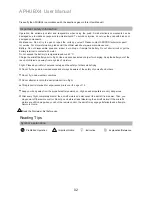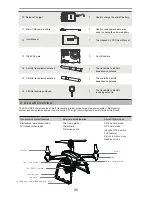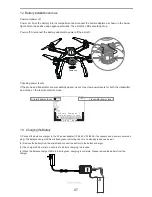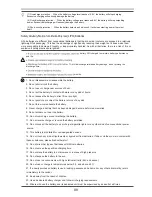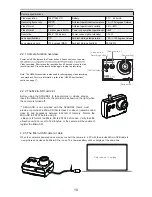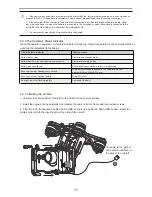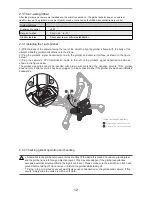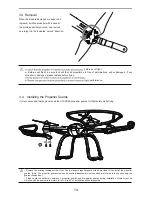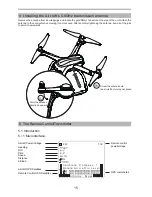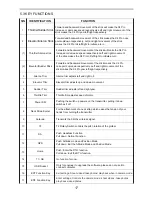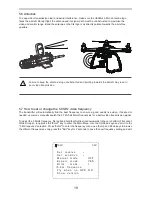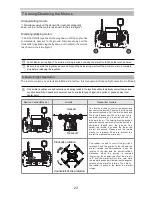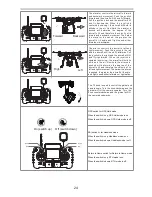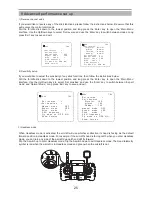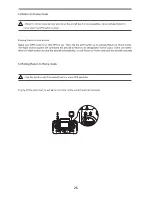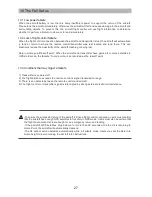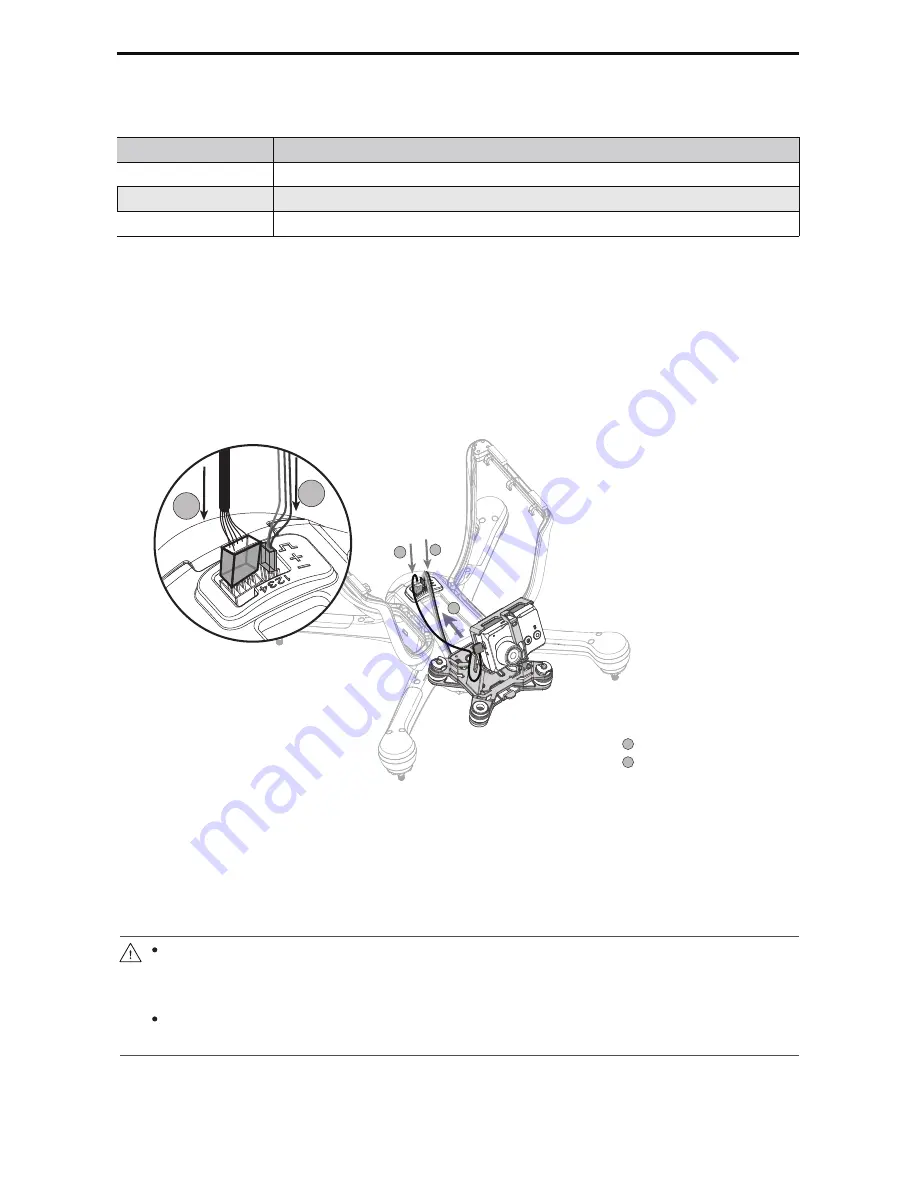
12
2.3 The 1-axis gimbal
After the gimbal and camera are installed and the aircraft powered on, the gimbal will also power on and test
itself for issues. The gimbal’s movement (pitch) may be controlled by the H906A transmitter/remote control.
Gimbal features
Precision of control
±0.03 °
Range of motion
Pitch: + 80 ° to -50 °
Stability features
Shock ab software stabilization
2.3.1 Installing the 1-axis gimbal
(Gimbal installation diagram)
2
Gimbal signal transmission line
3
Camera FPV transmission cable
2.3.2 Checking gimbal operation and handling
1
2
3
3
2
e
h
t
f
o
y
ll
e
b
e
h
t
h
ti
w
e
m
a
rf
s
’l
a
b
m
i
g
e
h
t
n
g
il
a
,t
f
a
r
c
ri
a
e
h
t
f
o
r
a
e
r
e
h
t
g
n
i
c
a
f
a
r
e
m
a
c
e
h
t
f
o
k
c
a
b
e
h
t
h
ti
W
)
1
aircraft. Slide the gimbal horizontally onto the drone.
e
r
u
g
if
e
h
t
n
i
n
w
o
h
s
s
a
e
c
a
fr
e
t
n
i
a
r
e
m
a
c
d
n
a
l
a
b
m
i
g
e
h
t
o
t
e
n
il
n
o
i
s
s
i
m
s
n
a
rt
l
a
n
g
i
s
s
’l
a
b
m
i
g
e
h
t
g
u
l
P
)
2
below.
s
a
e
l
b
a
c
n
o
i
s
s
i
m
s
n
a
rt
l
a
n
g
i
s
s
’l
a
b
m
i
g
e
h
t
f
o
tf
e
l
e
h
t
o
t
e
l
b
a
c
n
o
i
s
s
i
m
s
n
a
rt
V
P
F
s
’
a
r
e
m
a
c
e
h
t
g
u
l
P
)
3
shown in the figure below.
The gimbal signal line should be inserted with brown wire matching the negative polarity. If the gimbal
does not move after every line has been plugged in, please check to see if the gimbal line has been installed
backwards.
Anomalies in the gimbal’s movement may manifest if the aircraft is placed on uneven ground/grass
and the gimbal runs into foreign objects present. This may also happen if the gimbal experiences
excessive external movement/force (being hit or broken). Please make sure the aircraft is on flat, open
ground before taking off; do not move or disturb the gimbal while taking off.
Flying in fog or in cloud cover will most likely cause condensation on the gimbal and camera. If this
occurs, simply wipe the units dry with a soft cloth.


